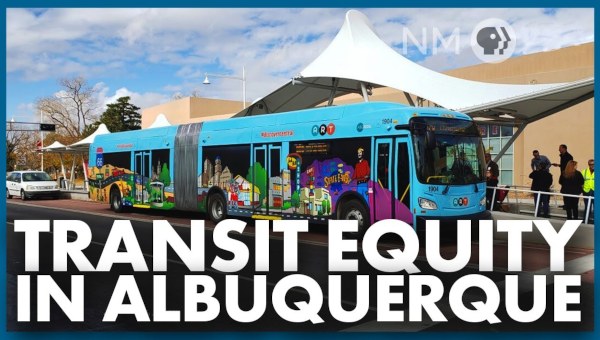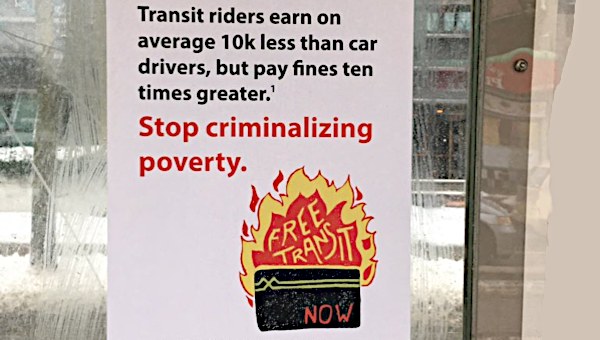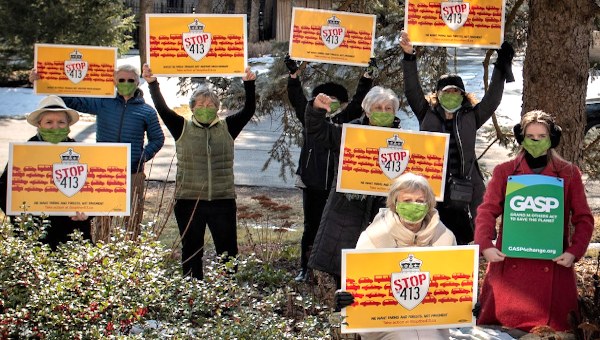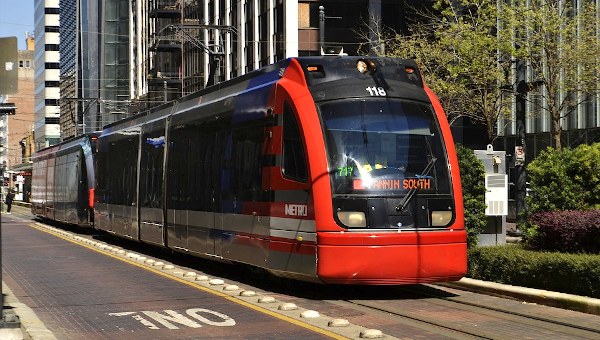The current conflagration of the Dilma Rousseff government notwithstanding, Brazil has been an inspiring source of debate for the global left over the last generation. This has been true for a range of initiatives, including the rise of the Workers’ Party (PT) in
the 1980s, municipal socialist projects in the 1990s, and the movement of landless workers Movimento dos Trabalhadores Rurais Sem Terra (MST). The demand for free transit has been an important starting point of more recent mobilizations, notably those that shook the whole country in the summer of 2013. This interview with local activists and researchers João Tonucci and André Veloso zeroes in on transit organizing in Belo Horizonte. At the heart of the third largest metropolitan area in Brazil, the city of Belo Horizonte is also the capital of Minas Gerais, which, as the name indicates, is the state traditionally oriented toward extractive capitalism.
João Tonucci holds a bachelor’s degree in Economics, with a Master’s degree in Architecture and Urbanism, and is a Ph.D. candidate in Geography at the Federal University of Minas Gerais (UFMG). He was a visiting scholar at the City Institute, York University (2015).
André Veloso holds a bachelor’s degree in Economics, with a Master’s degree in Geography at UFMG. He was a member of Belo Horizonte’s Urban Mobility City Council from 2013 to 2015, and is a member of Tarifa Zero – Belo Horizonte.
Stefan Kipfer is Associate Professor in the Faculty of Environmental Studies, York University.
Stefan Kipfer (SK): What can you tells us about transit activism in Belo Horizonte? What are its major demands? What kind of transportation issues does it foreground? What social bases and neighbourhoods does it activate? Is it connected to transit users as well as transit workers? How does it organize?
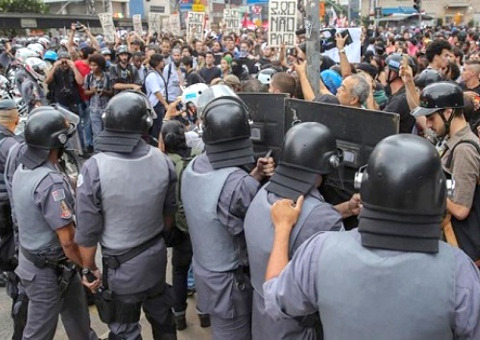
João Tonucci and André Veloso (JT/AV): There are some organizations advocating a new type of transit politics in the city of Belo Horizonte (BH), Brazil: although few, they know how
to press and force dialogue with the local government forces (especially city hall and city council). We can say that are three
kinds of transit activism movements in BH that have developed over the last 30 years. The oldest one was born among the popular urban
social movements and the political mobilizations for democracy in the 80s that were behind the formation of the Workers’ Party (PT). Organized in the poor peripheries of the metropolitan area – which
were very poorly served by urban services and infrastructure at that time – these movements basically demanded access to bus lines. As
the years passed by, activists from these movements – today organized around the Association of the Public Transport Users (AUTC)
– became more and more entrenched in public institutions. In the same way as the PT as a whole, they have fallen under the sway of
bureaucracy and co-optation. Even though they took part in the nation-wide transit protests in 2013, they were always a minority, and are usually seen as part of the establishment by the new movements.
The second type of transit activism promotes cycling against the hegemony of motorized transport. Belo Horizonte is a very hilly city, and for
a long time was seen as an unfriendly terrain for biking. However, over the last 10 years, and especially influenced by the “critical
mass” movement, the bike movement began to organize itself in the city. From a really small group of anarchists and autonomists, it has
grown and gained influence among the middle-class youth and college students. In a way, its social composition has contributed to a certain “hipster” reputation that the movement has among the city
lefties. On the other hand, the activists that had put their effort in creating organizations such as BH em Ciclo
(the urban bikers city association) were successful in pressing the government to debate and formulate cycling public policy in BH.
Although we are very far from anything close to a bike friendly city, bicycle paths have been built and a system of bike sharing has been
implemented. This was achieved partly due to pressure from the movement but also thanks to the work of planners and civil servants
committed to the cycling agenda. The next issues for the movement are the integration with public transport system, the extension of
business hours in which bikes are allowed in buses and the subway, and the building of support infrastructure in transport stations.
Last, but not least, the third type of transit activism was born in the beginning of this century, having as its central issue public
transport fares. Initially, this activism came from high school students demanding free access to buses, but with the great uprisings
in Salvador in the year of 2003 (known as “A Revolta do Buzu,” The Bus Revolt) and in Florianópolis in 2004 and 2005 (known as
“Guerra da Tarifa,” The Fare War), the youth demands switched to fares as a whole and from there to the slogan “free transit.” It is important to
mention that the activists in 2004-2005 that gathered to organize the national Movimento Passe Livre (MPL, Free Transit Movement) found out that during the PT local government in São Paulo (1988-1992) an attempt had been made by
Lucio Gregorio, former transport secretary, to abolish fares in the city bus system, causing enormous resistance by the establishment.
Since 2005, the MPL in São Paulo has organized high school students in the urban peripheries to resist fare increases year after year, influencing similar organizations across the country.
In Belo Horizonte, Marxist-Leninist political parties opposed the free fare agenda as too utopian. Nonetheless, this agenda has gained
momentum since 2012, and, with the 2013 transit protests acquired centrality in transit activism as a whole. In July 2013, activists
began a political campaign that proposed to inscribe free transit in the city’s “organic law” (a type of municipal constitution). For this purpose, it was necessary to gather 95,000 signatures. All
the public efforts and activities necessary to collect signatures led to the creation of the Movimento Tarifa Zero Belo Horizonte (BH Free Fare Movement). This movement advocates not only for fare-free rides, but also a new model of transit governance in which public contracts with private transit operators are subject to
stronger democratic control. Although it was not able to gather the necessary number of signatures, the movement has pursued a diverse
range of actions against the fare and fare increases aimed at different political targets such as public institutions (bylaws,
lawsuits, budget proposals), and society as a whole (protests, street parties, street posters, art and culture). The activists are mainly
middle-class college students, which narrows somewhat the social reach of the movement.
Recently there was a schism in Tarifa Zero BH. Anarchists and autonomist activists created a municipal section of MPL; their main critique was Tarifa‘s lack of social roots among the poor and the periphery, a problem
acknowledged but far from solved by Tarifa Zero BH. Another main issue that concerns this new group is the lack of
dialogue with transit workers, which is in part due to the transit workers’ union and its entrenched bureaucratic practices.
SK: How is transit activism in Belo Horizonte different from transit politics in other parts of Brazil? Do these differences relate to the comparative differences between Belo Horizonte (and Minas Gerais) and other major regions in Brazil?
JT/AV: As already mentioned above, middle class youth have played a major role in transit activism in recent years. This is also true for nationwide
transit activism, so the differences between transit activism in Belo Horizonte and other cities result from differences between youth activism in Belo Horizonte and in other cities.
It is also important to stress that the political class that represents bus companies has a strong social base in Minas Gerais, especially
in Belo Horizonte. The National Confederation of Transports (“Confederação Nacional do Transporte – CNT”)
that represents companies in the logistics and public transport sectors has gained a major political influence in the last two
decades thanks in part to the strong coordination of Minas Gerais entrepreneurs. In fact, it is worthy to notice that Minas Gerais’
bus companies have managed to hold the local market while gaining ground in other regions, such as Brasilia and the Northeast.
SK: More than simply a local-regional question, transit has been an important
catalyst for movement mobilizations in Brazil in the last few years.
Is this still the case now? Would you say that Belo Horizonte is still part of a broader, extra-local cycle of mobilization?
JT/AV: The 2013 protests owed their beginning to long-term efforts by MPL – São Paulo. In a way, they were the only movement in Brazil that could
make the transition from the antiglobalization movements of the early 2000s to more local issues like transit while still maintaining an
autonomist model of organization. Nevertheless, when the 2013 protest gained national support, the establishment tried to depict as utopian
and unrealistic the main MPL demand: free transit. At the same time, several left and extreme-left organizations that had never regarded transit as a main issue of mobilization saw the 2013 protests as an opportunity to win over activists and gain strength. This twin reaction took momentum away from transit activism to such an extent that that it has become hard to mobilize through the transit agenda. However, as we mentioned before, Tarifa Zero BH itself is a product of 2013 and used transit as a catalyst for further mobilization.
SK: What importance does transit have relative to other social movements in Belo Horizonte? Do transit and mobility figure as elements in broader strategies of social and environmental transformation? How do transit organizers pose the organizational question given the deep crisis of the Workers’ Party (PT)?
JT/AV: The National Urban Reform Movement, which emerged from the lower classes and was one of the main social movements during the 80s, has always stressed housing as the key to the urban question in Brazil. Nonetheless, when the Workers’ Party acceded to the presidency with Lula in 2002, housing policies were not concerned with transit or the city as a whole. The national policy known as Minha Casa, Minha Vida – MCMV
(My House, My Life) is an explicitly market-driven solution to the 2008 crisis and has worsened infrastructure problems in major Brazilian cities, including transit. Some housing movements (especially those more organically attached to the PT) defended this kind of policy from a pragmatic point of view, despite its negative socio-spatial consequences. So, the transit question came onto the urban agenda of the main social movements in Belo Horizonte and in Brazil for the most part only after the 2013 protests.
Even so, there is no easy alignment between the older social movements and those that emerged in the 2000s. The older ones are still focused on improving individual consumption and developing the national economy through heavy investment, which were the main strategies of PT during its terms in government. This can be seen at its best in the performance of the automotive industry, which has increased the national fleet by more than 50 million vehicles over the last years. These views collide with the main proposal of the newer movements, which advocate for new forms of daily life, with less consumption and other types of production.
SK: In what sense do transit movements in Belo Horizonte and beyond see transit as an urban question? Do activists use the language of the ‘right to the city’, which has had some prominence in recent Brazilian history (If yes, how do activists in Belo Horizonte understand the right to the city in relationship to transportation)? In turn, does – or could – transit play a role in debates about the commons?
JT/AV: Movements such as Tarifa Zero BH and MPL were created to discuss and turn transit into a central urban question. The whole debate regarding the Free Fare agenda is to put into practice the idea of “the right to the city.” In the early 2000s,
when the agenda shifted from partial free transit for some constituencies (e.g.: for high school students, for unemployed and so on) to free transit as a general principle, the movements stressed that public transport is the main tool that gives access to the city and to urban life (leisure, health and education, etc). Without such access, the city cannot fulfill all of its urban potentials; in fact, “the city only exists for those who can get through it” is one of the main mottos of the free fare movement. Public transport in Latin America was born under the sign of private enterprise; as such, it was subject to political pressure and compromised by all sorts of deals and negotiations. To change how contracts are given out, how transit is financed and to make it free for all users is to subject a central aspect of urban life to democratic control, and to advance in the trench warfare against the current process of commodification of daily life. Together, these measures could be seen as a step toward the right to the city as a commons. •


